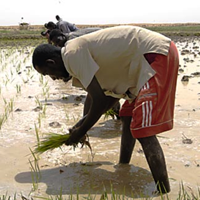Growing awareness of how development outcomes are dependent on our variable and changing climate is focusing increasing attention on the role of climate information in agricultural development. Much of this attention is driven by the growing acceptance that human activity is altering the Earth’s climate, and that the major greenhouse gas emitters have an obligation to help the most vulnerable to adapt. Independently of the climate change agenda, however, most of the international development banks have recognized that their investments are vulnerable to climate shifts and fluctuations, and now have strategies for screening projects for climate vulnerability and for making their investments more resilient to climate.
For obvious reasons, agriculture is particularly dependent on the climate. In rain-fed smallholder agricultural systems of the tropics and subtropics, where hunger and rural poverty are most persistent, climate shocks such as drought or flooding can and do lead to loss of life as well as long-term loss of livelihood through loss of productive assets, impaired health and damaged infrastructure. But the uncertainty associated with climate variability poses major challenges for agricultural management at all levels. It is a disincentive to investment in improved agricultural technology and market opportunities, for instance, prompting the risk-averse farmer to favor precautionary strategies that buffer against climatic extremes over activities that are more profitable on average.
To the degree that climatic uncertainty adversely impacts farmers' livelihoods, information that reduces this uncertainty has the potential to improve them. Indeed, several of the available options for managing climate-related risk across several sectors depend on climate-related information. However, they have not been fully exploited, in part because of gaps in existing climate information products and services.

